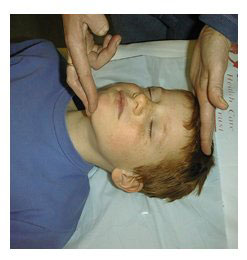Continuous positive airway pressure therapy
Table of Contents
Table of Contents
Are you or a loved one struggling with sleep due to breathing difficulties? Continuous positive airway pressure therapy may be the solution you’ve been searching for. However, it’s important to understand the importance of infection control practices while undergoing this treatment. In this article, we’ll cover everything you need to know about Continuous positive airway pressure therapy and infection control practices.
The Importance of Continuous Positive Airway Pressure Therapy
Sleep apnea affects millions of Americans, leading to daytime fatigue and potentially serious health consequences. Continuous positive airway pressure therapy, or CPAP, is a common treatment for sleep apnea that involves wearing a mask over the nose and/or mouth to deliver a steady stream of air pressure. This keeps the airway open and prevents interruptions in breathing during sleep, leading to a better night’s rest.
However, CPAP therapy is not without its challenges. Some patients struggle with finding the right mask fit or adjusting to the sensation of air pressure. Additionally, proper maintenance and cleaning of CPAP equipment is essential to prevent the buildup of bacteria that can cause infections. In fact, one study found that infection rates among CPAP users were higher than among those who did not use the therapy, highlighting the need for infection control practices while using CPAP.
The Target of Continuous Positive Airway Pressure Therapy and Infection Control Practices
The target of CPAP therapy is to provide a steady stream of air pressure that keeps the airway open during sleep. This reduces snoring and interruptions in breathing that can lead to poor sleep quality and potentially dangerous health consequences. However, it’s important to balance the benefits of CPAP with infection control practices to prevent the spread of harmful bacteria.
One important infection control practice is cleaning CPAP equipment on a regular basis. This includes washing the mask, hose, and water chamber with soap and water, as well as using a disinfectant solution to kill any bacteria that may be present. CPAP users should also avoid sharing their equipment with others and keep their mask and hose away from pets or other sources of contaminants.
Personal Experience with Continuous Positive Airway Pressure Therapy and Infection Control Practices
I was skeptical of CPAP therapy at first, but it has been a game changer for my sleep quality. However, I quickly realized the importance of infection control practices. I make sure to clean my equipment regularly and store it in a clean, dry place. It takes some extra effort, but it’s worth it to prevent infections and ensure the longevity of my equipment.
The Connection Between Sleep Apnea and Infections
Research has found a correlation between sleep apnea and an increased risk of respiratory infections. One study found that individuals with sleep apnea were more likely to develop pneumonia than those without the condition. Additionally, inadequate oxygenation during sleep can weaken the immune system, making it harder for the body to fight off infections.
Maintaining a Clean and Healthy Sleep Environment
In addition to cleaning CPAP equipment, it’s important to maintain a clean and healthy sleep environment overall. This includes washing bedding regularly, vacuuming floors and carpets, and keeping pets out of the bedroom if possible. Using a humidifier or air purifier can also help to keep the air clean and comfortable.
The Importance of Consistent Therapy
One of the biggest challenges of CPAP therapy is consistently using the equipment every night. However, it’s important to stick to a consistent routine in order to experience the full benefits of the therapy. This includes using the equipment for the recommended amount of time each night and bringing it with you while traveling.
Question and Answer
Q: How often should I clean my CPAP equipment?
A: You should clean your CPAP equipment on a daily basis. This includes washing the mask, hose, and water chamber with soap and water, as well as using a disinfectant solution weekly.
Q: Can I use tap water in my CPAP humidifier?
A: It is not recommended to use tap water in your CPAP humidifier, as it can contain bacteria, minerals, and other contaminants that can damage your equipment and cause infections. Instead, use distilled water or water that has been boiled and cooled.
Q: Can CPAP therapy make sleep apnea go away?
A: CPAP therapy is not a cure for sleep apnea, but it can effectively manage the symptoms and improve sleep quality. It’s important to continue using the therapy as recommended by your doctor in order to experience its full benefits.
Q: Are there any alternative treatments for sleep apnea?
A: There are several alternative treatments for sleep apnea, including oral appliance therapy, positional therapy, and surgery. Talk to your doctor to determine which treatment is right for you.
Conclusion of Continuous Positive Airway Pressure Therapy and Infection Control Practices
Continuous positive airway pressure therapy is a safe and effective treatment for sleep apnea, but it’s important to understand the importance of infection control practices in order to prevent the spread of harmful bacteria. By consistently cleaning equipment and maintaining a clean sleep environment, CPAP users can experience the full benefits of the therapy and enjoy better-quality sleep.
Gallery
Mechanism Of Action Of Continuous Positive Airway Pressure Therapy IV

Photo Credit by: bing.com / airway mechanism
What Is Continuous Positive Airway Pressure Therapy? | GenesisCare

Photo Credit by: bing.com / continuous airway positive pressure
Continuous Positive Airway Pressure (CPAP) Devices Market

Photo Credit by: bing.com / pressure positive airway continuous cpap devices types market machine breathing bipap different insights premium press release
Continuous Positive Airway Pressure Therapy | Nursing Information

Photo Credit by: bing.com / pressure continuous positive airway therapy
Continuous Positive Airway Pressure (CPAP) -Therapie

Photo Credit by: bing.com / cpap apnea airway nasal sleepers suffering bipap snoring therapie hable dificultades prism somsak eyeem using copd galeon fitnesslifestylehealthclub




